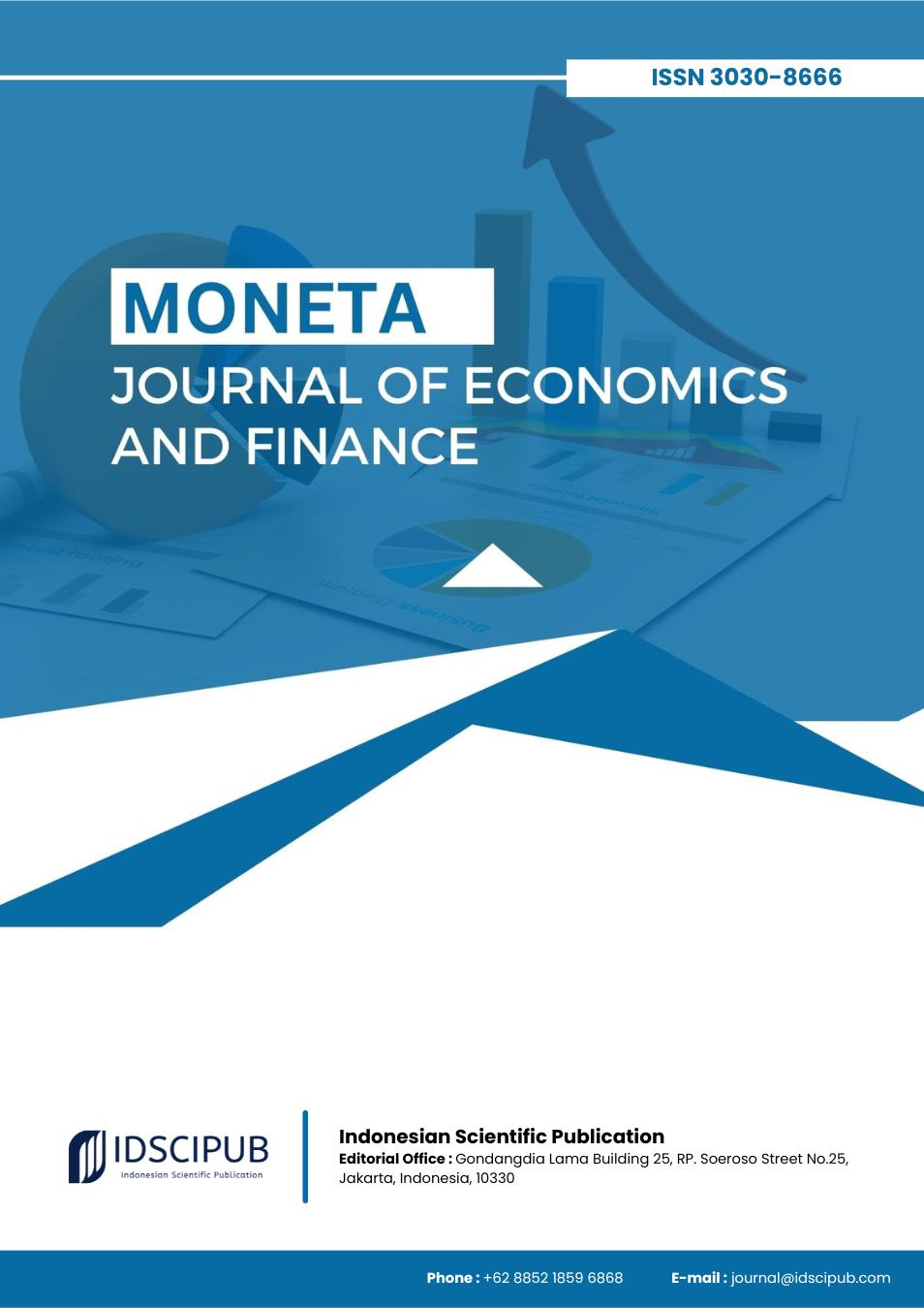The Role of Socioeconomic and Cultural Factors in Shaping Healthcare Accessibility
DOI:
https://doi.org/10.61978/moneta.v2i3.884Keywords:
Healthcare Access, Health Inequality, Public Health Policy, Socio-Economic Determinants, Cultural Barriers, Universal Health Coverage, Healthcare EquityAbstract
Access to healthcare remains a critical concern globally, particularly in low- and middle-income countries where systemic barriers persist. This narrative review aims to examine the multi-layered factors influencing healthcare access, including social, economic, policy, and cultural dimensions. Literature was sourced from major scientific databases such as PubMed, Scopus, and Web of Science using key terms like "healthcare access," "health equity," and "public health policy." The selection criteria emphasized peer-reviewed studies focusing on determinants of access to health services across various geographical contexts. Findings demonstrate that educational level, social stratification, and income disparities significantly shape individuals' ability to seek and receive healthcare. Cultural beliefs and stigmas further limit service utilization, especially for chronic and stigmatized conditions. Moreover, policies that are not evidence-based or fail to account for local realities often exacerbate existing inequities. Although countries like Sweden have implemented successful universal health programs, their replication requires context-sensitive adaptation. The discussion reveals that bureaucratic inefficiencies and systemic inequalities perpetuate inaccessibility, highlighting the need for more responsive and community-centered health policies. In conclusion, this study calls for integrative approaches that combine education, policy reform, and culturally aligned interventions to bridge healthcare gaps. It recommends future research on localized service models and the expansion of digital health education tools to enhance access and equity.
References
Atkinson, P., Sheard, S., & Walley, T. (2019). ‘All the stars were aligned’? The origins of England’s National Institute for Health Research. Health Research Policy and Systems, 17(1). https://doi.org/10.1186/s12961-019-0491-5 DOI: https://doi.org/10.1186/s12961-019-0491-5
Bannayan, M., Paymard, P., & Ashraf, B. (2016). Vulnerability of maize production under future climate change: Possible adaptation strategies. Journal of the Science of Food and Agriculture, 96(13), 4465–4474. https://doi.org/10.1002/jsfa.7659 DOI: https://doi.org/10.1002/jsfa.7659
Beran, D., Lazo‐Porras, M., Camille, M., & Mbanya, J. (2021). A global perspective on the issue of access to insulin. Diabetologia, 64(5), 954–962. https://doi.org/10.1007/s00125-020-05375-2 DOI: https://doi.org/10.1007/s00125-020-05375-2
Coque, T., Cantón, R., Pérez‐Cobas, A., Fernández-de-Bobadilla, M., & Baquero, F. (2023). Antimicrobial resistance in the global health network: Known unknowns and challenges for efficient responses in the 21st century. Microorganisms, 11(4), 1050. https://doi.org/10.3390/microorganisms11041050 DOI: https://doi.org/10.3390/microorganisms11041050
Coppens, D., Wilde, S., Guchelaar, H., Bruin, M., Leufkens, H., Meij, P., … & Hoekman, J. (2018). A decade of marketing approval of gene and cell-based therapies in the United States, European Union and Japan: An evaluation of regulatory decision-making. Cytotherapy, 20(6), 769–778. https://doi.org/10.1016/j.jcyt.2018.03.038 DOI: https://doi.org/10.1016/j.jcyt.2018.03.038
Fairbrother, A., Muir, D., Solomon, K., Ankley, G., Rudd, M., Boxall, A., … & Brooks, B. (2019). Toward sustainable environmental quality: Priority research questions for North America. Environmental Toxicology and Chemistry, 38(8), 1606–1624. https://doi.org/10.1002/etc.4502 DOI: https://doi.org/10.1002/etc.4502
Garrison, H., & Deschamps, A. (2013). NIH research funding and early career physician scientists: Continuing challenges in the 21st century. The FASEB Journal, 28(3), 1049–1058. https://doi.org/10.1096/fj.13-241687 DOI: https://doi.org/10.1096/fj.13-241687
Irwin, R. (2019). Sweden’s engagement in global health: A historical review. Globalization and Health, 15(1). https://doi.org/10.1186/s12992-019-0499-1 DOI: https://doi.org/10.1186/s12992-019-0499-1
Luby, S. (2018). Urban slums: A supportive ecosystem for typhoidal Salmonellae. The Journal of Infectious Diseases, 218(suppl_4), S250–S254. https://doi.org/10.1093/infdis/jiy324 DOI: https://doi.org/10.1093/infdis/jiy324
Luo, Y., Chen, H., Zhu, Q., Peng, C., Yang, G., Yang, Y., … & Zhang, Y. (2014). Relationship between air pollutants and economic development of the provincial capital cities in China during the past decade. PLOS ONE, 9(8), e104013. https://doi.org/10.1371/journal.pone.0104013 DOI: https://doi.org/10.1371/journal.pone.0104013
Mackey, T., & Schoenfeld, V. (2016). Going “social” to access experimental and potentially life-saving treatment: An assessment of the policy and online patient advocacy environment for expanded access. BMC Medicine, 14(1). https://doi.org/10.1186/s12916-016-0568-8 DOI: https://doi.org/10.1186/s12916-016-0568-8
Marczewska, M., & Kostrzewski, M. (2020). Sustainable business models: A bibliometric performance analysis. Energies, 13(22), 6062. https://doi.org/10.3390/en13226062 DOI: https://doi.org/10.3390/en13226062
Meena, M., Prabha, S., & Pandian, S. (2014). A cloud-based mobile robotic system for environmental monitoring. https://doi.org/10.1109/apcase.2014.6924484 DOI: https://doi.org/10.1109/APCASE.2014.6924484
Santosa, A., Wall, S., Fottrell, E., Högberg, U., & Byass, P. (2014). The development and experience of epidemiological transition theory over four decades: A systematic review. Global Health Action, 7(1). https://doi.org/10.3402/gha.v7.23574 DOI: https://doi.org/10.3402/gha.v7.23574
Yao, Q., Li, X., Luo, F., Yang, L., Liu, C., & Sun, J. (2019). The historical roots and seminal research on health equity: A referenced publication year spectroscopy (RPYS) analysis. International Journal for Equity in Health, 18(1). https://doi.org/10.1186/s12939-019-1058-3 DOI: https://doi.org/10.1186/s12939-019-1058-3






